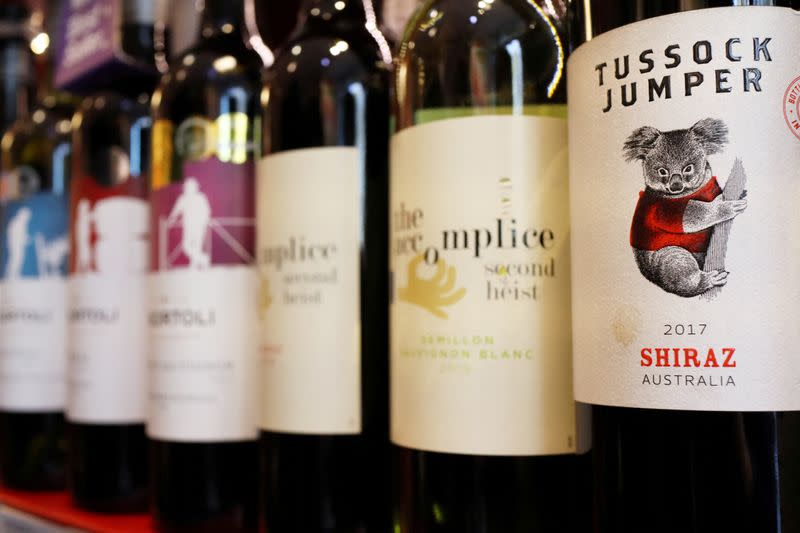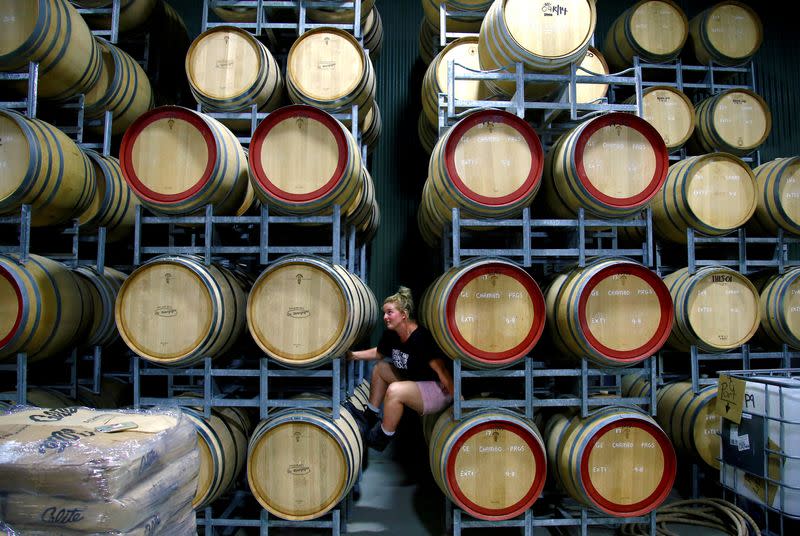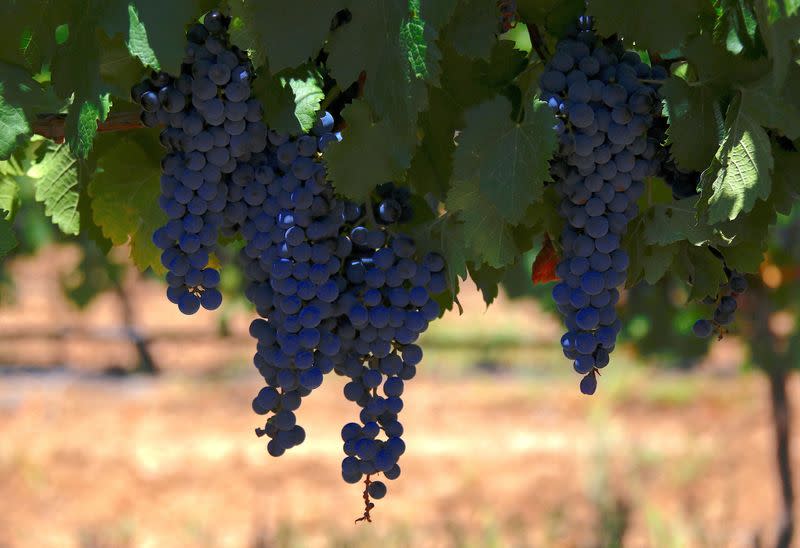Australian wine sector a worrying case study for EU industries in China trade spat
By Peter Hobson and Emma Rumney
CANBERRA/LONDON (Reuters) - Hit with Chinese tariffs, Australia's wine industry struggled to offset the impact of falling exports despite scrambling to build new markets, source grapes from elsewhere and seek government help, industry executives said.
That indicates what may be to come for food- and drink-producing sectors caught up in an EU-China trade dispute that threatens to complicate their access to the critical Chinese market.
Though the EU's winemakers are not part of the current spat, its pork and brandy sectors fear they could be hit with retaliatory measures from Beijing after the bloc imposed tariffs of up to 38% on Chinese-made electric vehicles.
Australian sectors faced similar curbs after the country's calls for an inquiry into the origins of COVID-19 led to Chinese import restrictions on a range of its products. The first tariffs on wine were introduced in November 2020.
While most industries were able to find alternative - albeit often less profitable - markets, the Australian wine industry lost market share, key relationships and profits after China imposed tariffs of up to 218%.
Famous for its cheap reds and pricier bottles from regions like the Clare and Barossa valleys, Australia was the world's fifth-largest wine exporter and China its most valuable export market. The move all but wiped out exports worth $800 million a year.
While some larger players with production outside Australia, such as Treasury Wine Estates, fared better, Australia's wine exports in 2023 were worth 34% less than in 2019, according to Australian trade data.
A key lesson for wine makers like William Dong, CEO of DMG Fine Wine, is not to rely too much on China again.
"Never make the same mistake," he said. "We want to dance with China, but we don't want to go all in with them."
DMG, whose brands include Handpicked and House of Arras, tripled production from outside Australia to sell in China and increased its market share in the U.S. and southeast Asia following the tariffs, Dong said.
It recouped some lost business, but its sales remained 30% lower than before 2020, he said. "We were not as profitable as we used to be."
NO SUCCESS STORY
Tariffs, which were lifted this year, came at a time when the Australian wine industry faced global oversupply, falling consumption and COVID-19.
While they were in place, Australian wine production shrank, stockpiles ballooned to more than two billion litres, and grape growers began destroying millions of unprofitable vines.
Other industries such as barley, blocked by China in 2020, fared better at finding new markets but often had to settle for lower sale prices. Three executives and two people at industry associations said Australian wine makers resisted price cuts because they damage value long-term.
Treasury Wine Estates was able to sell wines from outside Australia in China and began sourcing grapes from Chinese growers to get around tariffs. Penfolds, one of its brands popular in China, had higher net revenues in 2023 than before the tariffs.
CEO Tim Ford told investors last week that the company was entering the post-tariff era as a "stronger and more diversified global business".
Not all the strategies open to Australian winemakers can be easily adopted by EU industries under threat of tariffs.
China's EU brandy imports, for example, are dominated by French cognac, which cannot be produced anywhere but the Cognac region in France.
Such industries can diversify their sales. But building new markets takes time, Australian winemakers say.
The industry turned to the government for help with expansion, with Canberra paying for wine marketers to help companies establish trade relationships in other nations.
Bigger shipments to South Korea and Thailand helped lift the value of Australian wine exports to Asian countries outside China to $470 million in 2023 from $300 million in 2021, Australian trade data show.
But overall, wine makers had mixed success in building sales, said Lee McLean, CEO of industry body Australian Grape & Wine. "Our story is not a particularly successful one," he said.
Companies like Taylors Wines, a family-owned winery in the Clare Valley in South Australia that used to sell a third of its exports in China under its Wakefield brand, have been forced to scale back their operations.
Managing director Mitchell Taylor said wresting back lost market share will not be easy.
French, Chilean and domestic wine makers expanded in China while companies like his lost trading relationships and laid off staff in the country, Taylor continued.
"If we ever get back to the level we had, it will take a long time."
(Reporting by Peter Hobson in Canberra and Emma Rumney in London; Editing by Jan Harvey)

 Yahoo Finance
Yahoo Finance 


